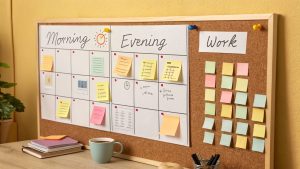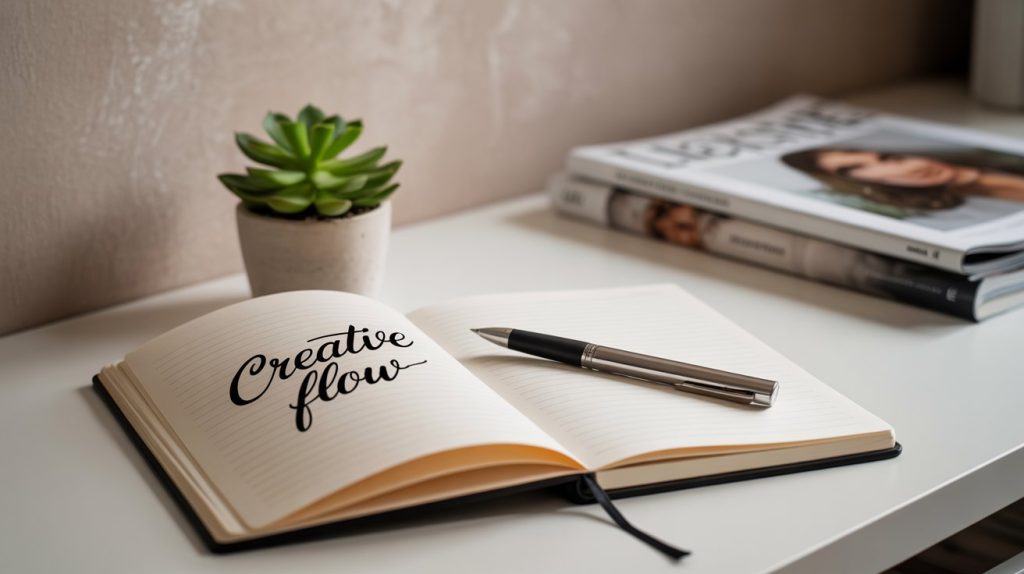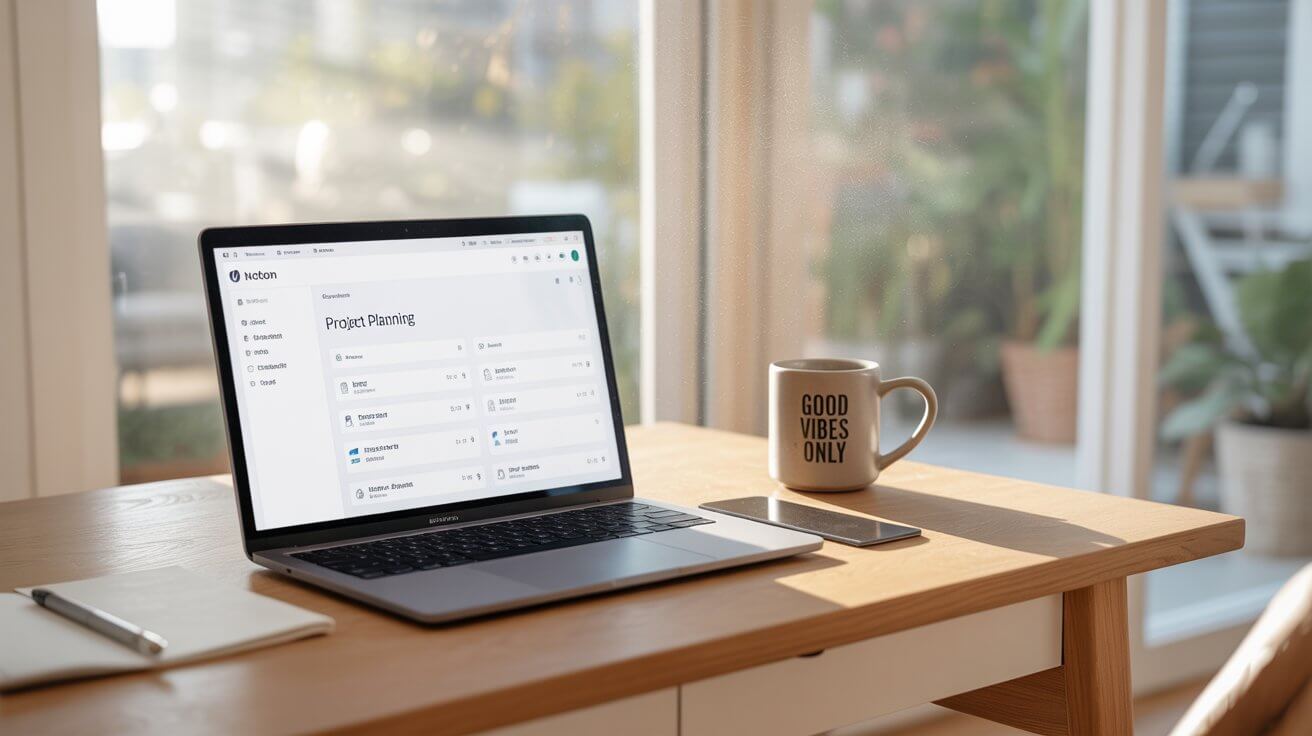There’s this weird pressure around routines. Like, if yours isn’t perfect 5 a.m. workouts, green smoothies two hours of journaling you’re already behind. But that’s not real life.
A successful daily routine isn’t about checking boxes or copying someone else’s schedule. It’s about creating space. For clarity. For focus. For rest. A structure that holds up your goals, whether you’re trying to pass finals or grow a business. When you figure that out, everything gets lighter. You stop reacting to the day and start moving with purpose.
Let’s keep it simple. We’re going to look at how routines actually work, why they matter, how to shape your mornings and evenings, and what tools can make it easier. Not perfectly, just realistically.
Why a daily routine builds Long-Term success
There’s a reason we keep coming back to the idea of routine. Even if you’ve never called it that, you’ve got one. The question is “is it helping you or wearing you out?”
It’s not about discipline, it’s about rhythm
Most people think routines are all about willpower. Waking up early. Getting everything done. No slacking. But routines that last aren’t built on force. They’re built on rhythm. You do a few of the same things every day, and your brain starts to relax into the pattern. Less decision fatigue. More mental energy for what actually matters.
Consistency beats intensity. Every time.
The brain likes loops
We’re wired for routine. Morning cues, bedtime rituals, they give your brain signals. This is how we start. This is how we stop. Without those cues, everything runs together. That’s when burnout creeps in. Or procrastination. Or that foggy feeling where everything’s important and nothing gets done. The power of a daily routine is that it breaks your day into smaller, clearer chapters.
Mental space, not just time management
It’s not just about squeezing more into your calendar. A solid routine frees up mental space. You stop spinning your wheels trying to remember what’s next. You stop reacting to every ping, message, or notification. That space is where your best work happens. Or real rest. Or creativity. And the more chaotic your life is, exams, side gigs, family, deadlines, the more helpful it is to have a routine that grounds you.
A few examples that stick
You don’t need to be a productivity guru to make this work. I’ve seen students create focus by just doing one thing at the same time every day, like reviewing notes at 8 p.m. or taking a five-minute walk before studying. Entrepreneurs I’ve worked with don’t always have tight schedules. But they’ve got rituals, morning check-ins, weekly planning sessions, screen-free nights.
What makes these routines work is that they’re personal. They’re not based on hacks. They’re built from what actually fits into real life. And when you’re ready to dive into that kind of personal rhythm, one of the easiest places to start is with your morning.
A good morning routine for productivity isn’t about doing more, it’s about starting better. It sets the tone, gives you clarity, and helps your day unfold with less stress.
Designing your morning, workday, and evening routines

Let’s be honest: most days don’t fall apart because of one big thing. They drift. One distraction leads to another. A few tabs open, a few texts come in, then suddenly it’s 4 p.m. and nothing really got done. That’s where a structured routine helps. Not to control every minute. Just to give your day a bit of shape. Like rails for a train, you’re still driving, but you’ve got direction.
Here’s how I break mine up: a calm start, some focused blocks, and a proper shut-down. Simple. But it works.
Your morning matters more than you think
The first 60 minutes? That’s where the tone is set. You don’t need to wake up at sunrise. But you do need to wake up on purpose. Start with how you actually get up. I used to rely on harsh alarms that jolted me out of sleep. I’d wake up groggy, annoyed, and already behind.
Now I use Sleep Cycle. It wakes you at the lightest part of your sleep cycle, so you feel less like a zombie. That alone changed how my days begin. Then: no phone. No messages. Just ten quiet minutes. Sometimes I sit with a cup of tea. Other times I listen to Headspace. Even short breathing sessions give me a clear head. That calm space lets you think. Then you move. Light stretch, short walk, even five squats. Doesn’t matter. It just signals: we’re on.
Top it off by setting your focus. I pick 3 key tasks for the day. Write them down. Say them out loud. Whatever works.
Structure your work blocks
Once your morning is on track, the rest of the day feels less like a blur. Still, it helps to add a bit of rhythm to your work time. I like to chunk it. 90-minute blocks, one clear task. No multitasking. Then a short break, real break, not scrolling.
A lot of people use tools like Notion or Todoist here. I keep a simple board in Notion with tasks grouped by focus. When I open my laptop, I know what’s on deck. And during those breaks? Move. Breathe. Step away from the screen. It’s easy to think productivity is about pushing through. But real momentum comes from balance. Focus. Reset. Repeat.

Build a soft landing in the evening
You don’t need a perfect night routine. Just a signal to your brain: we’re done now. I keep mine short and simple. Around 9 p.m., I dim the lights. Put my phone on silent. Maybe make some tea. Then I set the mood, usually with Calm or Pzizz. Both help my brain slow down without forcing it. I’ve written more on this evening routine breakdown, but the core idea is: give yourself space to unplug. Even 15 minutes can make a difference.
I also jot down one or two things I want to focus on tomorrow. That tiny act helps me sleep better. No racing thoughts. No mental clutter. Even if the rest of your day is unpredictable, this part can be yours.

Tools, templates, and tips to stick with your routine
Creating a routine is one thing. Keeping it going? That’s the real challenge. Life gets busy. Energy dips. Plans change. You miss a day. Then two. Before you know it, the routine’s gone.
That’s where the right tools come in. Not to make you dependent on apps, but to give your brain less to carry. Less to remember. More space to focus on the actual doing.
Let’s look at the ones that have helped me stick with things over time. Whether you’re tracking habits, setting priorities, or just trying to stay organized.

Habit trackers that don’t get in your way
Most of us know what we want to do. The hard part is remembering to do it, consistently. That’s where a habit tracker helps.
You could use a notebook, a wall calendar, even sticky notes. But digital trackers give you extra perks: reminders, visual patterns, flexibility.
One tool I use daily is Notion. I’ve built my own little habit dashboard in there, but you don’t have to start from scratch. There are tons of ready-to-use templates.
This Notion habit tracker setup is clean, simple, and works whether you’re tracking two habits or twenty. You check off what you did, maybe leave a note, and move on. No friction.
The best part? You see your own rhythm. What’s working. What’s not. That kind of feedback makes a difference.
Task managers that support your routine
I used to bounce between to-do list apps like I was dating them. Too clunky, too busy, too annoying. Then I landed on Todoist. It’s clean. Fast. Syncs everywhere. But most of all, it’s built for rhythm.
You can set recurring tasks like “stretch every morning” or “review priorities at 9 p.m.” And it remembers for you. That’s the real win. I keep a project called “Core Habits” where all my daily tasks live. Even on days when my brain is fried, I know what to do next.
If you want to try that setup, I shared how I do it with Todoist for daily productivity habits. It doesn’t take long to set up, and it makes your whole system smoother.
Headspace, Sleep Cycle, and Calm, the support squad
These aren’t mandatory. But if your routine needs a softer edge, they help.
Headspace is great for grounding your mornings. Even three minutes of guided breathing helps you stay off autopilot. Sleep Cycle supports your wake-up rhythm. No more being ripped out of sleep by a harsh alarm. And Calm helps you close the day gently. Especially if your mind tends to spin at night.
Each of these tools covers a part of your day. You don’t need them all. Just pick one that supports the part of your routine you struggle with most.
Keep it visible, keep it flexible
This part might be the most important. Don’t let your routine live in your head. Put it somewhere you can see it. On your phone. On a whiteboard. In a planner. Visibility makes consistency easier.
And be ready to adjust. Some weeks are off. Some days you’re tired. A good routine flexes with you. I’ve rebuilt mine probably ten times in the last year. Each time, it got a little more realistic. A little more mine.
Start where you are, not where you “should” be
You don’t need the perfect system. You don’t need to get it right on the first try. The key is to start where you are. Try one morning habit. Track one thing in Notion. Prep one small part of tomorrow before bed. You’ll miss days. That’s fine. The goal isn’t streaks. It’s rhythm.

And if you’re unsure where to start, go with your morning. That’s where momentum begins. This guide to building a morning routine for productivity breaks it down in a way that actually sticks. One small shift at the start of your day changes everything that follows.
Let Your Days Work for You, Not Against You
A good routine doesn’t feel like pressure. It feels like support. It helps you move through the day with less stress, fewer distractions, and more clarity about where your energy’s going. That’s what a daily routine for success really is, it’s not about perfection or hustle. It’s about flow.
When you build in a calm morning, a focused work rhythm, and a soft landing at night, everything starts to feel a little lighter. More doable. Less scattered. You don’t have to rely on motivation as much, because the system’s already carrying some of the weight. Start small. Let it grow naturally. Adjust as your life shifts.
And if you’re looking for a way to get your habits locked in without overthinking the setup, this daily habit tracker guide will help you keep it simple and flexible. It’s not about doing more. It’s about building something that lasts.
Rhislaine E.



